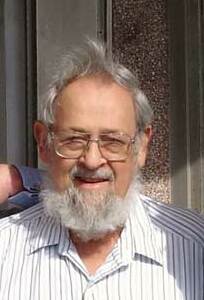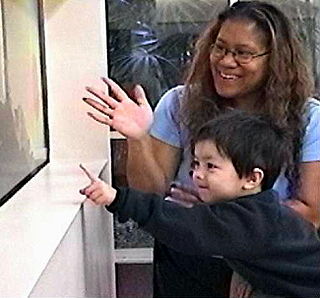
Assistive technology (AT) is a term for assistive, adaptive, and rehabilitative devices for people with disabilities and the elderly. Disabled people often have difficulty performing activities of daily living (ADLs) independently, or even with assistance. ADLs are self-care activities that include toileting, mobility (ambulation), eating, bathing, dressing, grooming, and personal device care. Assistive technology can ameliorate the effects of disabilities that limit the ability to perform ADLs. Assistive technology promotes greater independence by enabling people to perform tasks they were formerly unable to accomplish, or had great difficulty accomplishing, by providing enhancements to, or changing methods of interacting with, the technology needed to accomplish such tasks. For example, wheelchairs provide independent mobility for those who cannot walk, while assistive eating devices can enable people who cannot feed themselves to do so. Due to assistive technology, disabled people have an opportunity of a more positive and easygoing lifestyle, with an increase in "social participation", "security and control", and a greater chance to "reduce institutional costs without significantly increasing household expenses." In schools, assistive technology can be critical in allowing students with disabilities to access the general education curriculum. Students who experience challenges writing or keyboarding, for example, can use voice recognition software instead. Assistive technologies assist people who are recovering from strokes and people who have sustained injuries that affect their daily tasks.
Facilitated communication (FC), or supported typing, is a scientifically discredited technique that claims to allow non-verbal people, such as those with autism, to communicate. The technique involves a facilitator guiding the disabled person's arm or hand in an attempt to help them type on a keyboard or other such device which they are unable to properly use if unfacilitated.
Mixed receptive-expressive language disorder is a communication disorder in which both the receptive and expressive areas of communication may be affected in any degree, from mild to severe. Children with this disorder have difficulty understanding words and sentences. This impairment is classified by deficiencies in expressive and receptive language development that is not attributed to sensory deficits, nonverbal intellectual deficits, a neurological condition, environmental deprivation or psychiatric impairments. Research illustrates that 2% to 4% of five year olds have mixed receptive-expressive language disorder. This distinction is made when children have issues in expressive language skills, the production of language, and when children also have issues in receptive language skills, the understanding of language. Those with mixed receptive-language disorder have a normal left-right anatomical asymmetry of the planum temporale and parietale. This is attributed to a reduced left hemisphere functional specialization for language. Taken from a measure of cerebral blood flow (SPECT) in phonemic discrimination tasks, children with mixed receptive-expressive language disorder do not exhibit the expected predominant left hemisphere activation. Mixed receptive-expressive language disorder is also known as receptive-expressive language impairment (RELI) or receptive language disorder.

Diagnoses of autism have become more frequent since the 1980s, which has led to various controversies about both the cause of autism and the nature of the diagnoses themselves. Whether autism has mainly a genetic or developmental cause, and the degree of coincidence between autism and intellectual disability, are all matters of current scientific controversy as well as inquiry. There is also more sociopolitical debate as to whether autism should be considered a disability on its own.
Reading for special needs has become an area of interest as the understanding of reading has improved. Teaching children with special needs how to read was not historically pursued due to perspectives of a Reading Readiness model. This model assumes that a reader must learn to read in a hierarchical manner such that one skill must be mastered before learning the next skill. This approach often led to teaching sub-skills of reading in a decontextualized manner. This style of teaching made it difficult for children to master these early skills, and as a result, did not advance to more advanced literacy instruction and often continued to receive age-inappropriate instruction.

Bernard Rimland was an American research psychologist, writer, lecturer, and influential person in the field of developmental disorders. Rimland's first book, Infantile Autism, sparked by the birth of a son who had autism, was instrumental in changing attitudes toward the disorder. Rimland founded and directed two advocacy groups: the Autism Society of America (ASA) and the Autism Research Institute. He promoted several since disproven theories about the causes and treatment of autism, including vaccine denial, facilitated communication, chelation therapy, and false claims of a link between secretin and autism. He also supported the ethically controversial practice of using aversives on autistic children.
High-functioning autism (HFA) was historically an autism classification where a person exhibits no intellectual disability, but may experience difficulty in communication, emotion recognition, expression, and social interaction.

Augmentative and alternative communication (AAC) encompasses the communication methods used to supplement or replace speech or writing for those with impairments in the production or comprehension of spoken or written language. AAC is used by those with a wide range of speech and language impairments, including congenital impairments such as cerebral palsy, intellectual impairment and autism, and acquired conditions such as amyotrophic lateral sclerosis and Parkinson's disease. AAC can be a permanent addition to a person's communication or a temporary aid. Stephen Hawking, probably the best-known user of AAC, had amyotrophic lateral sclerosis, and communicated through a speech-generating device.
The following outline is provided as an overview of and topical guide to autism:

Autism therapies include a wide variety of therapies that help people with autism, or their families. Such methods of therapy seek to aid autistic people in dealing with difficulties and increase their functional independence.
In human development, muteness or mutism is defined as an absence of speech, with or without an ability to hear the speech of others. Mutism is typically understood as a person's inability to speak, and commonly observed by their family members, caregivers, teachers, doctors or speech and language pathologists. It may not be a permanent condition, as muteness can be caused or manifest due to several different phenomena, such as physiological injury, illness, medical side effects, psychological trauma, developmental disorders, or neurological disorders. A specific physical disability or communication disorder can be more easily diagnosed. Loss of previously normal speech (aphasia) can be due to accidents, disease, or surgical complication; it is rarely for psychological reasons.

Amelia Evelyn Voicy Baggs, also known as Mel Baggs, was an American non-binary blogger who predominantly wrote on the subject of autism and disability. At times, Baggs used a communication device to speak and referred to themself as a low-functioning autistic. Revelations about Baggs's past created some uncertainty about their diagnosis.

Speech-generating devices (SGDs), also known as voice output communication aids, are electronic augmentative and alternative communication (AAC) systems used to supplement or replace speech or writing for individuals with severe speech impairments, enabling them to verbally communicate. SGDs are important for people who have limited means of interacting verbally, as they allow individuals to become active participants in communication interactions. They are particularly helpful for patients with amyotrophic lateral sclerosis (ALS) but recently have been used for children with predicted speech deficiencies.

Classic autism, also known as childhood autism, autistic disorder, (early) infantile autism, infantile psychosis, Kanner's autism,Kanner's syndrome, or (formerly) just autism, is a neurodevelopmental condition first described by Leo Kanner in 1943. It is characterized by atypical and impaired development in social interaction and communication as well as restricted, repetitive behaviors, activities, and interests. These symptoms first appear in early childhood and persist throughout life.

The National Institute of Speech and Hearing (NISH) is an institute devoted to the education and rehabilitation of individuals with speech-language and hearing impairments located in Thiruvananthapuram, the capital city in the Indian state of Kerala. It was established in 1997 on the initiative of the state of Kerala and is a self-financing affiliate college of the University of Kerala. Academics at NISH is unique in the sense that NISH has an integrated campus where students with hearing impairment and students with normal hearing share the same campus. Bachelor's level courses exclusively for students with hearing impairment include Degree courses in Fine Arts, Computer Science and Commerce affiliated to University of Kerala. On the other hand, NISH also provides RCI approved professional courses at undergraduate level and graduate level in Audiology and Speech Language Pathology as well as diploma courses affiliated to Kerala Health University (KUHS)
The rapid prompting method (RPM) is a pseudoscientific technique that attempts to aid communication by people with autism or other disabilities to communicate through pointing, typing, or writing. Also known as Spelling to Communicate, it is closely related to the scientifically discredited technique facilitated communication (FC). Practitioners of RPM have failed to assess the issue of message agency using simple and direct scientific methodologies, saying that doing so would be stigmatizing and that allowing scientific criticisms of the technique robs people with autism of their right to communicate. The American Speech-Language-Hearing Association has issued a statement opposing the practice of RPM.
Soma Mukhopadhyay is an Indian educator and the creator of Rapid Prompting Method. Her use of RPM with her autistic son Tito Mukhopadhyay garnered media attention in America in the late 1990s and early 2000s.
Social (pragmatic) communication disorder (SPCD), also known as pragmatic language impairment (PLI), is a neurodevelopmental disorder characterized by significant difficulties in the social use of verbal and nonverbal communication. Individuals with SPCD struggle to effectively engage in social interactions, interpret social cues, and use language appropriately in social contexts. This disorder can have a profound impact on an individual's ability to establish and maintain relationships, navigate social situations, and participate in academic and professional settings. Although SPCD shares similarities with other communication disorders, such as autism spectrum disorder (ASD), it is recognized as a distinct diagnostic category with its own set of diagnostic criteria and features.
Deaf and hard of hearing individuals with additional disabilities are referred to as "Deaf Plus" or "Deaf+". Deaf children with one or more co-occurring disabilities could also be referred to as hearing loss plus additional disabilities or Deafness and Diversity (D.A.D.). About 40–50% of deaf children experience one or more additional disabilities, with learning disabilities, intellectual disabilities, autism spectrum disorder (ASD), and visual impairments being the four most concomitant disabilities. Approximately 7–8% of deaf children have a learning disability. Deaf plus individuals utilize various language modalities to best fit their communication needs.










